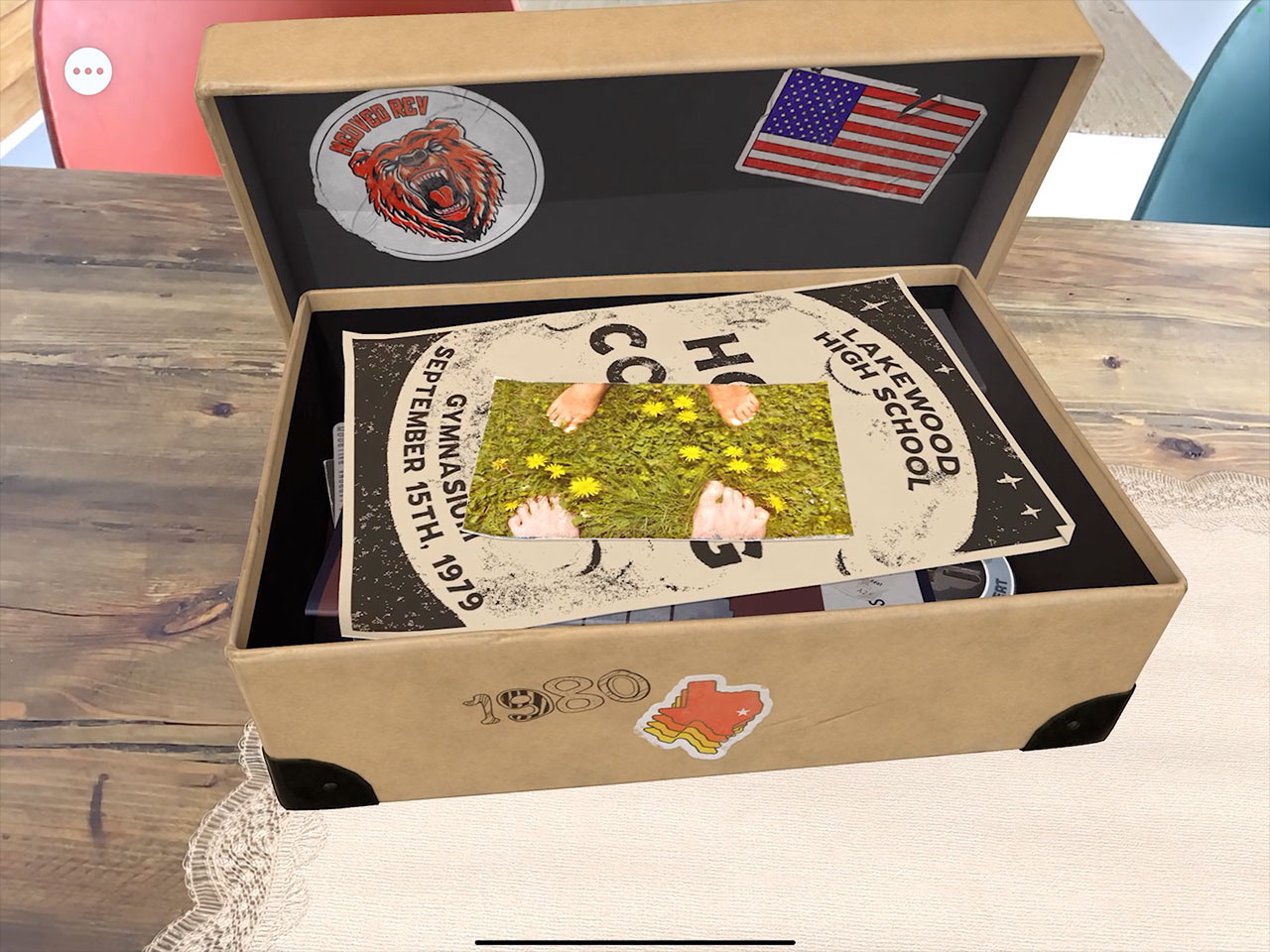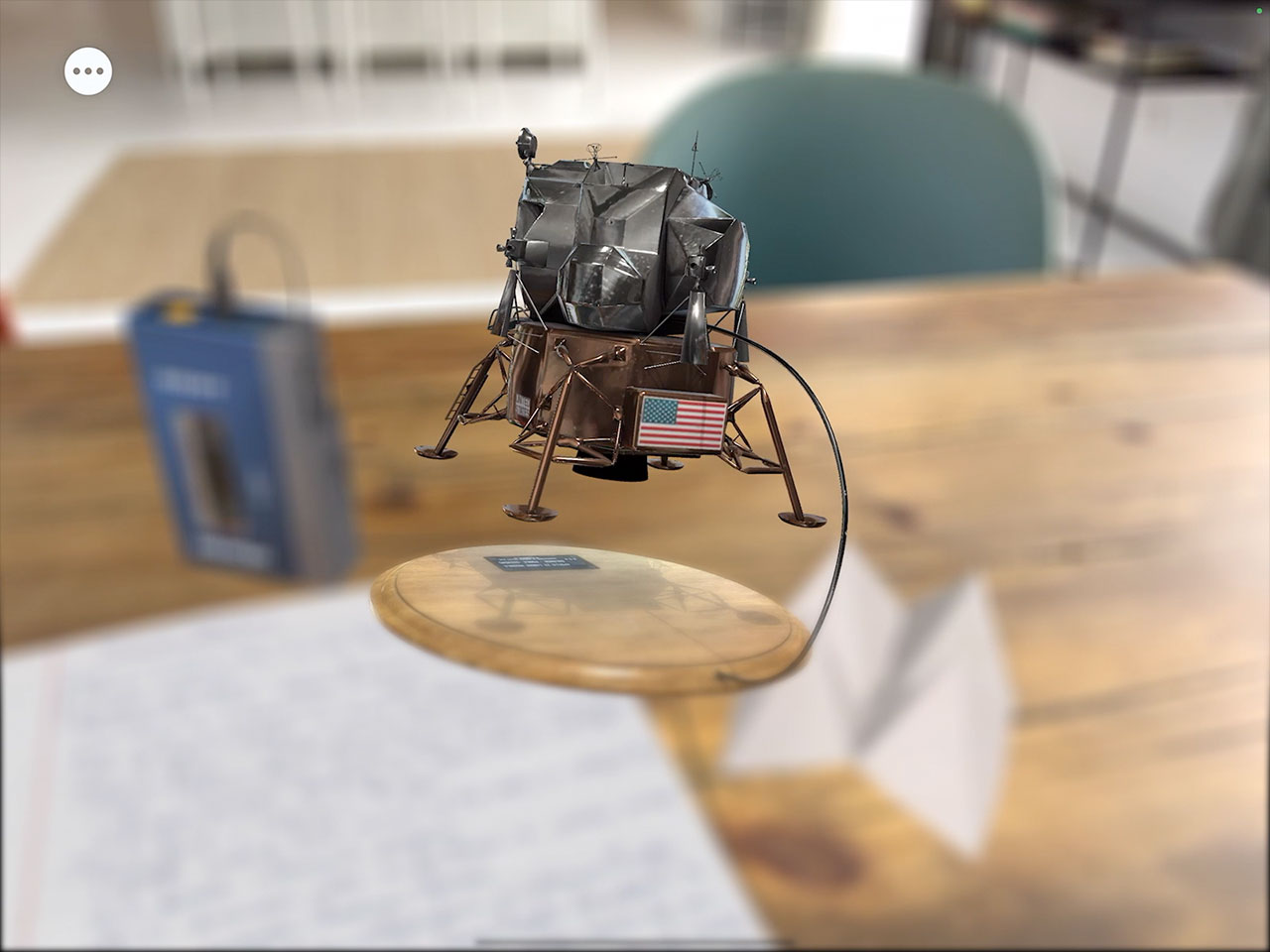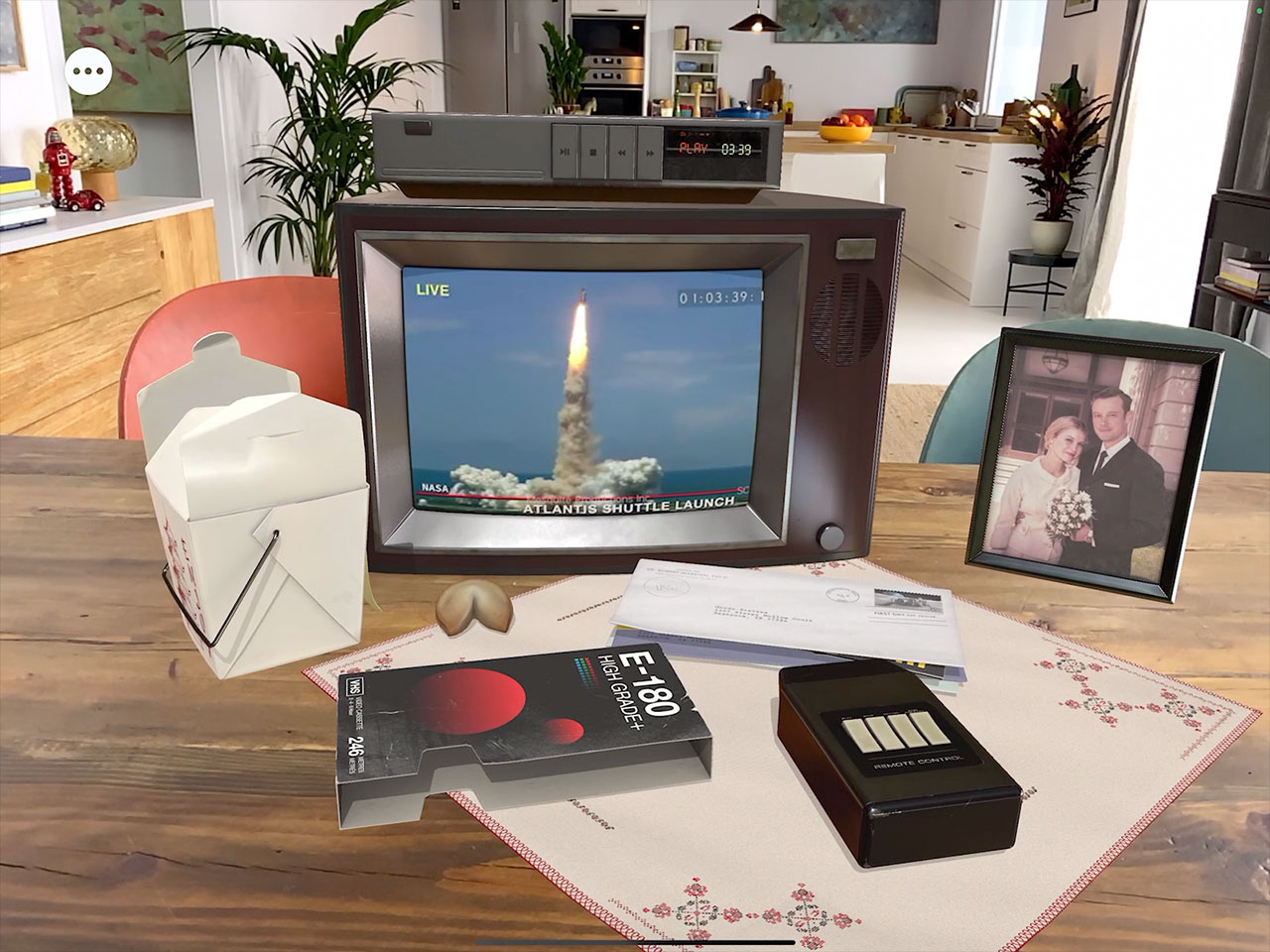'For All Mankind: Time Capsule' AR app augments alt space history series
The new app serves as a bridge between the first and second seasons of the alternate history series.

A new augmented reality app serves as a bridge between the first and second seasons of "For All Mankind," the Apple TV+ alternate space history series that explores what might have changed if the Soviets were the first to put a person on the moon.
In "For All Mankind: Time Capsule," now available through the Apple App Store, users can piece through a virtual box of personal mementos belonging to Danny Stevens (played by Casey Johnson), the son of astronauts Gordo and Tracy Stevens (Michael Dorman and Sarah Jones). The app uses the iPhone's or iPad's camera to make it look as if Danny's items are in the user's own setting, such that they sit on a real desk or are inside the same room as the user.
Featuring the voice talents of Johnson and Dorman, as well as co-stars Cynthy Wu (as Danny's best friend and a fellow child of an astronaut) and Krys Marshall (as astronaut Danielle Poole), the app enables users to discover some of what transpired between the Apollo-era events of season one and the upcoming space shuttle era. Season 2 premieres globally with the first of 10 episodes on Feb. 19, followed by one new episode weekly, every Friday, on Apple TV+.
Related: Tour the 'For All Mankind' moon base with a real-life astronaut
"When we first conceived the show, we wanted to see the space program we didn't get. In order to really tell that story, it had to be multi-year, multi-decades to really watch as we go from the Apollos to the shuttle to Mars and beyond," said Ron Moore, creator and executive producer of the series. "We decided early on as a writing group that the structure of the show would be, every season we would jump ahead roughly 10 years or so."
"For All Mankind: Time Capsule" is set in 1980, six years after season one ended and three years before season two picks up. Some of the period-specific items users can interact with include a VHS player, a mixtape, an Apple II computer and (if using the latest models of Apple's devices equipped with a LIDAR scanner) a slide projector.
Each device offers insights into the events of the first season, as well as some hints to what is to come next.
Get the Space.com Newsletter
Breaking space news, the latest updates on rocket launches, skywatching events and more!

"There are so many details that come up about the characters and the larger world of 'For All Mankind' that [we] just don't have the time or the space to get them in the episodes. So we have talked about expanding the story beyond the episodes and that AR and VR [augmented and virtual reality] would be like a great medium for that," producer Ben McGinnis told collectSPACE.com.
"So there are lots of great hints and easter eggs in [the app]. There are callbacks to season one, as well as stuff looking forward into season two. This is a specific moment in 1980, and it is specific to the Stevens' home," said McGinnis.
There are also AR items that recap how the space race between the United States and the Soviet Union continued beyond the first moon landing within the context of "For All Mankind." Danny's social studies class notes, for example, mirror some of the notes that Moore jotted down as he created the series.
Space race: Could the U.S. have beaten the Soviet Union into space?

"One of the very first things I wrote up for the show was a master alternate timeline that took up pages, and we've been embroidering on that ever since," said Moore. "It was fundamental, I thought, that if you're telling an alternate history piece like this [to know] what is the timeline, what are the sequence of events. The history aficionado in me geeked out on the fun of making a whole alternate history of the late 20th century."
As part of that, the "For All Mankind: Time Capsule" app also includes TV news clips filmed in the same format as those that are included in both seasons.

"The newscasts are something that I love in the show. We've shot a lot of them and inevitably they would get pared down and pared down [as] you can't really spend time. For me, personally, I find that aspect of the alternate history really fascinating to see — newscasts of the period done in an alternate way. So I always wanted to include that in whatever format we were playing around with in the AR," said Moore.
"For All Mankind: Time Capsule" allows fans of the show to go just a bit deeper into the framework of the series, Moore told collectSPACE.
"If you're a fan of the show and you're interested in the world of 'For All Mankind,' it's a tantalizing prospect," he said. "There is a part of you that just wants to know more — just wants to know a little bit more than what the TV show is telling you or wants to see what's behind that door, or what could that message have been, or what else is going on in the lives of the characters. So for fans, it provides a way to immerse themselves in that universe another step."
Follow collectSPACE.com on Facebook and on Twitter at @collectSPACE. Copyright 2021 collectSPACE.com. All rights reserved.
Join our Space Forums to keep talking space on the latest missions, night sky and more! And if you have a news tip, correction or comment, let us know at: community@space.com.

Robert Pearlman is a space historian, journalist and the founder and editor of collectSPACE.com, a daily news publication and community devoted to space history with a particular focus on how and where space exploration intersects with pop culture. Pearlman is also a contributing writer for Space.com and co-author of "Space Stations: The Art, Science, and Reality of Working in Space” published by Smithsonian Books in 2018.In 2009, he was inducted into the U.S. Space Camp Hall of Fame in Huntsville, Alabama. In 2021, he was honored by the American Astronautical Society with the Ordway Award for Sustained Excellence in Spaceflight History. In 2023, the National Space Club Florida Committee recognized Pearlman with the Kolcum News and Communications Award for excellence in telling the space story along the Space Coast and throughout the world.











